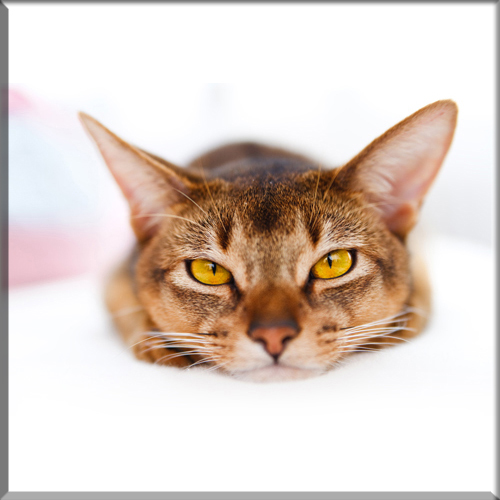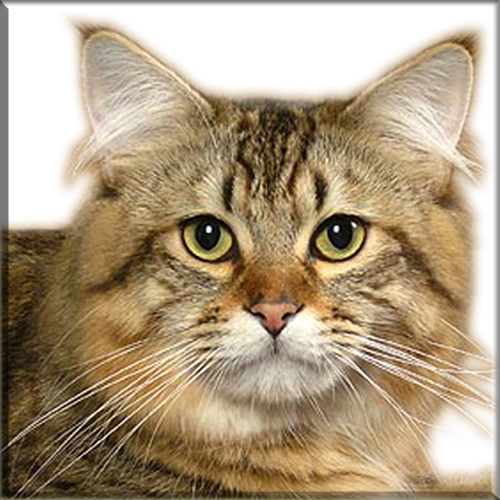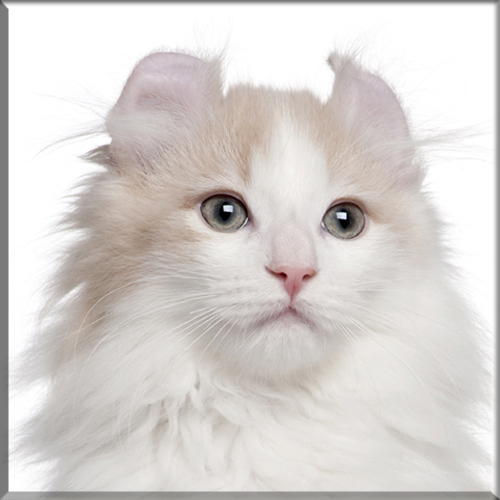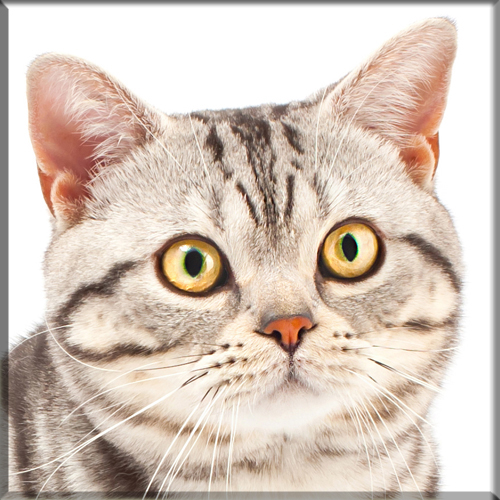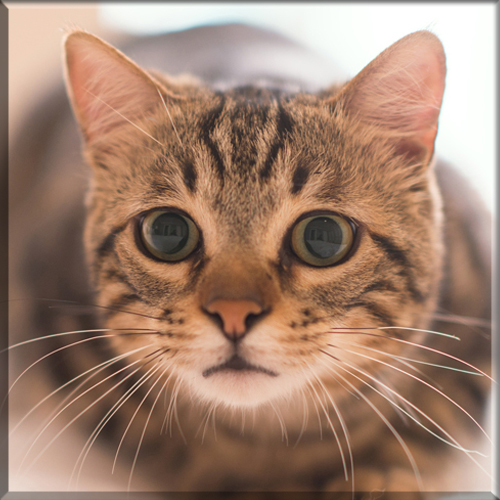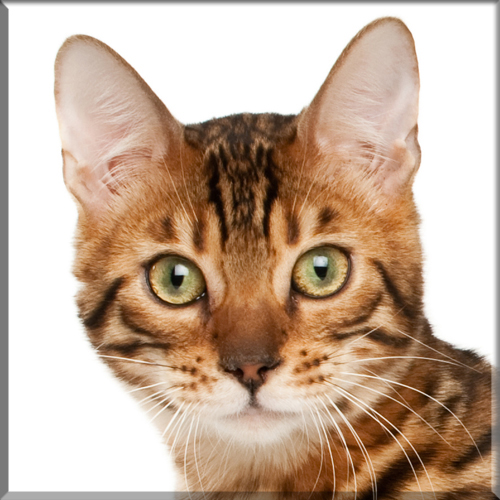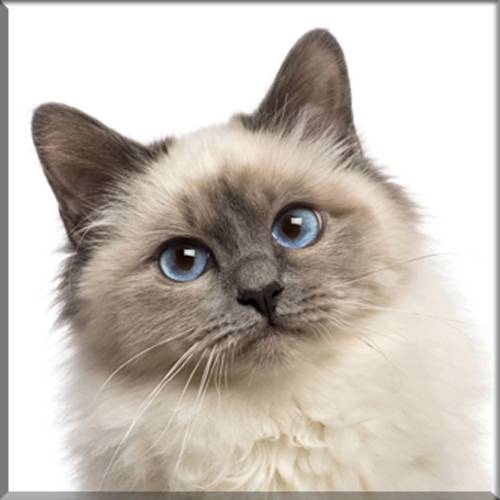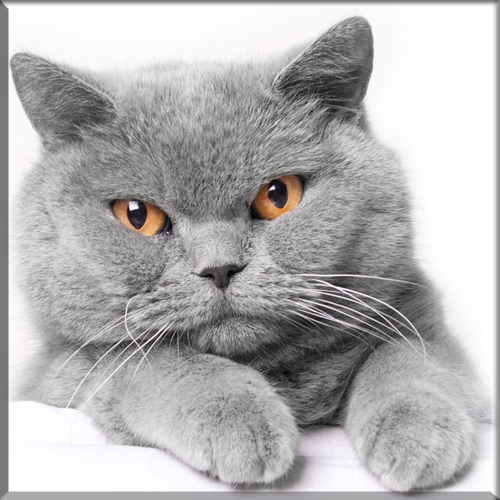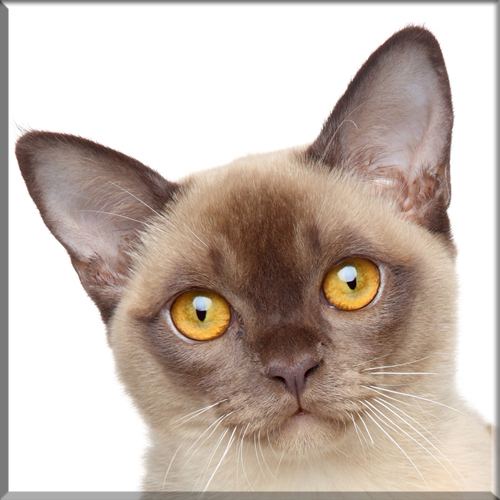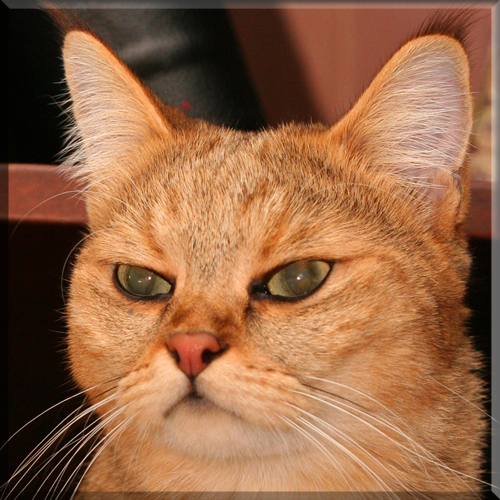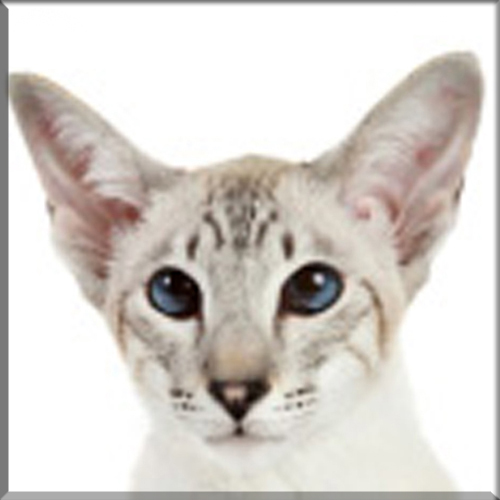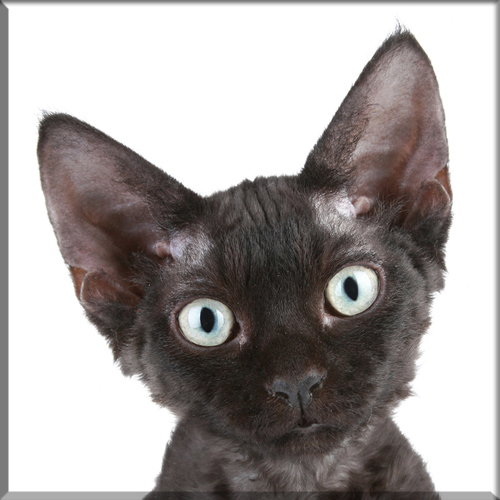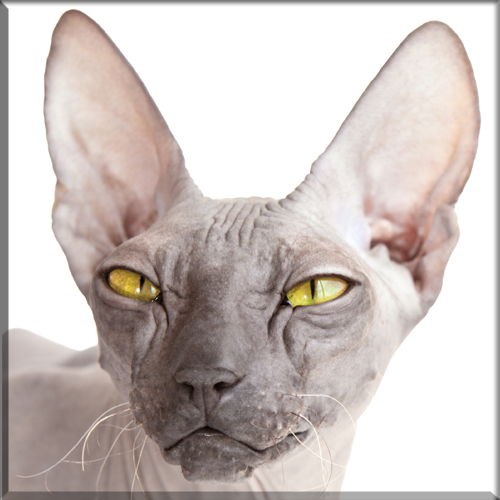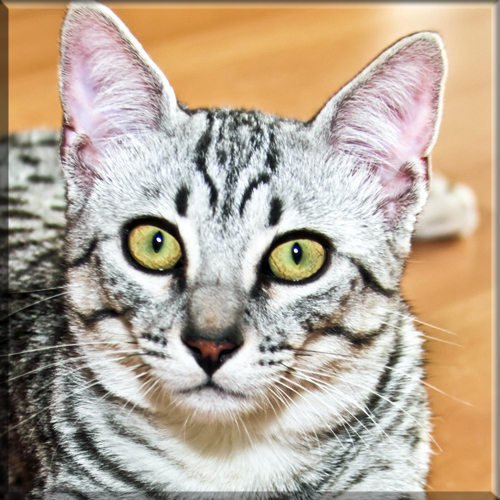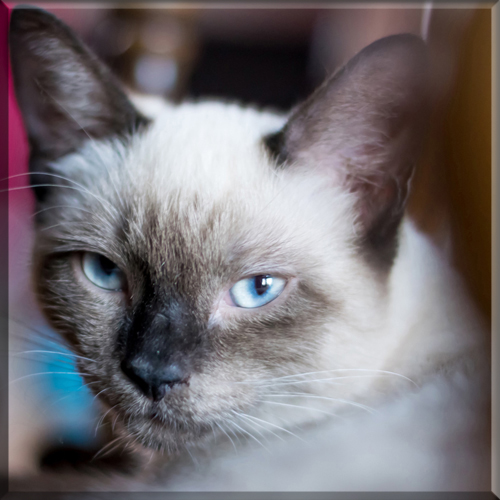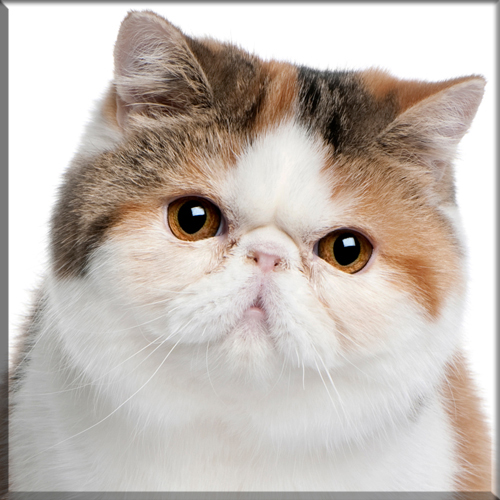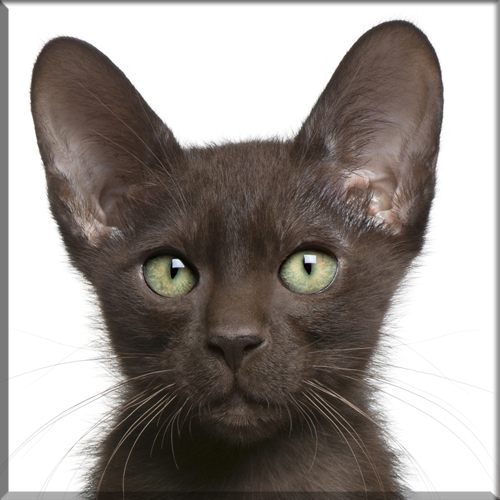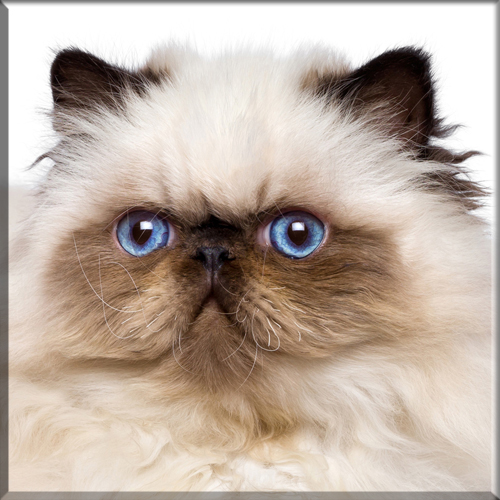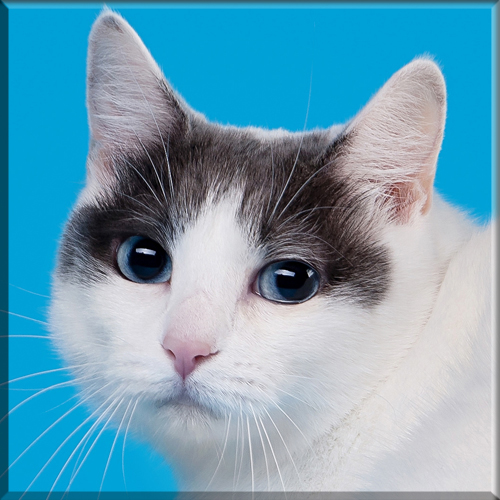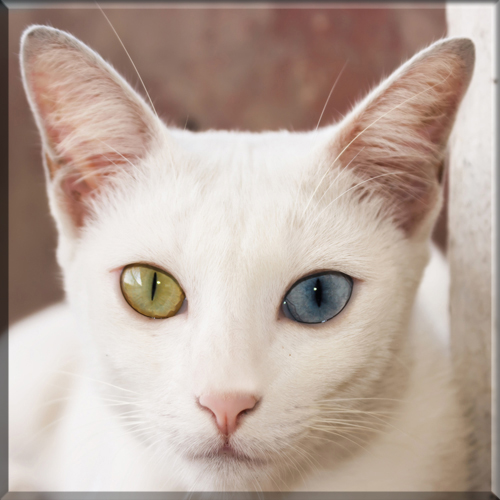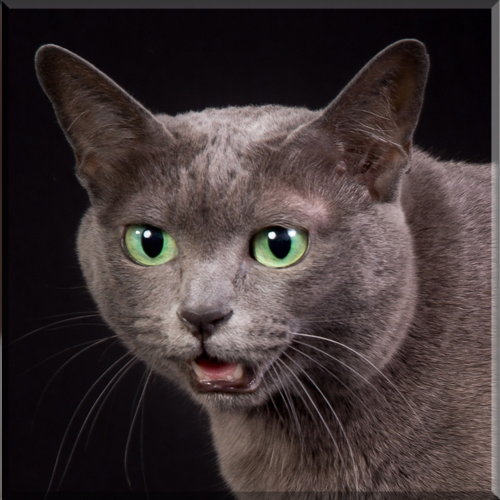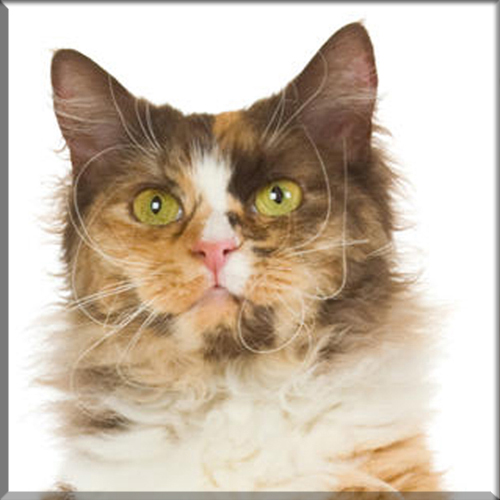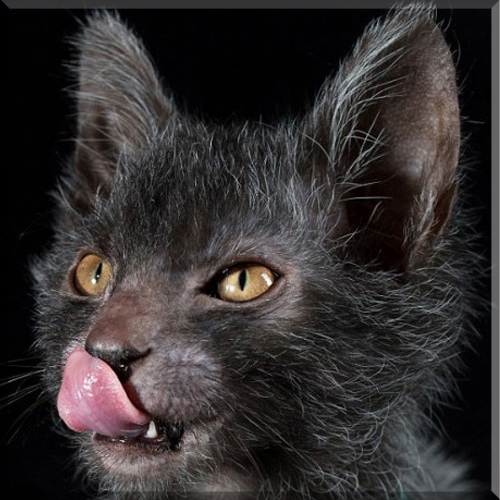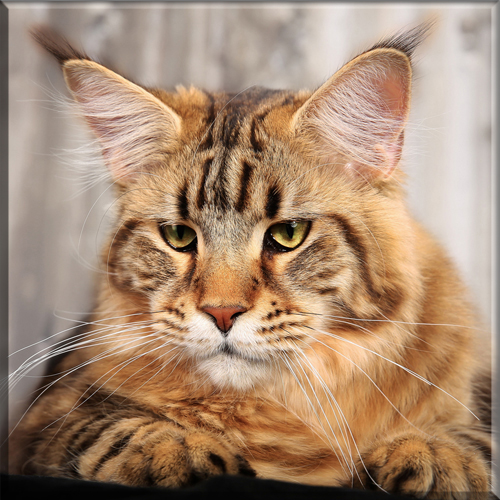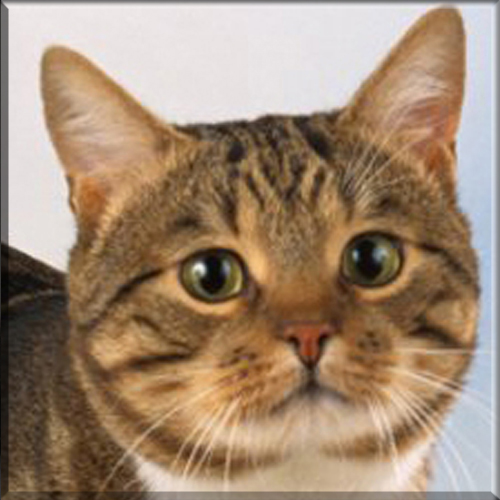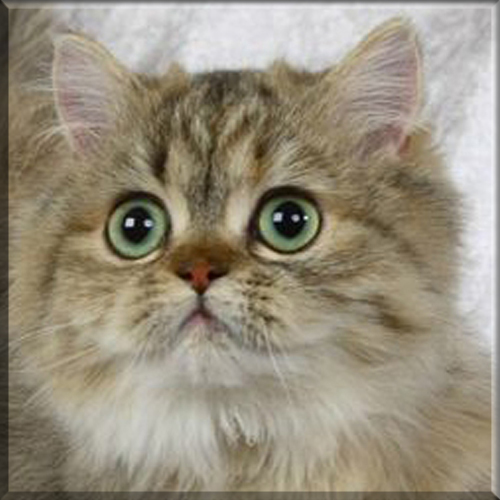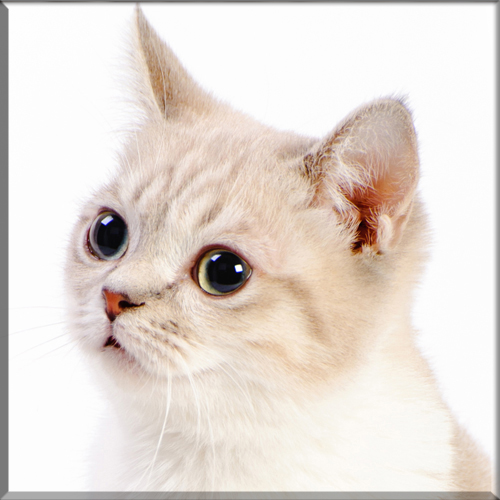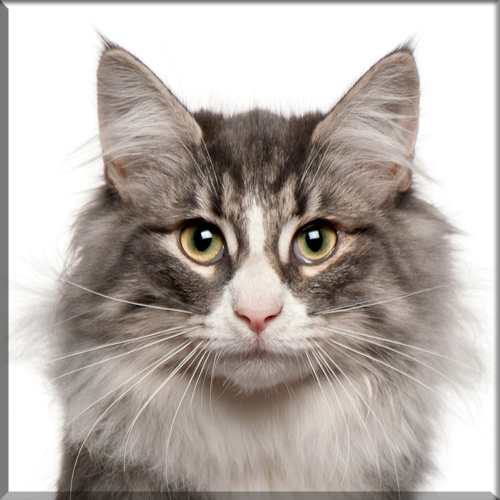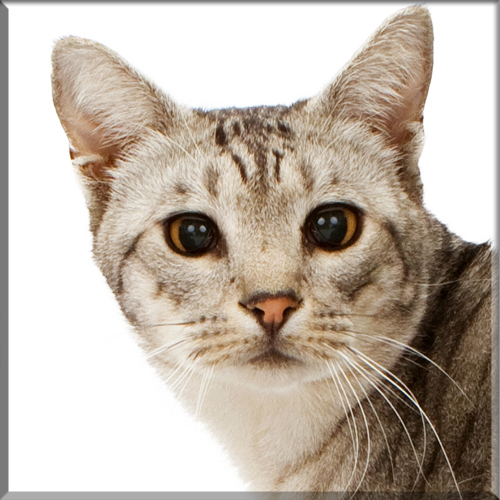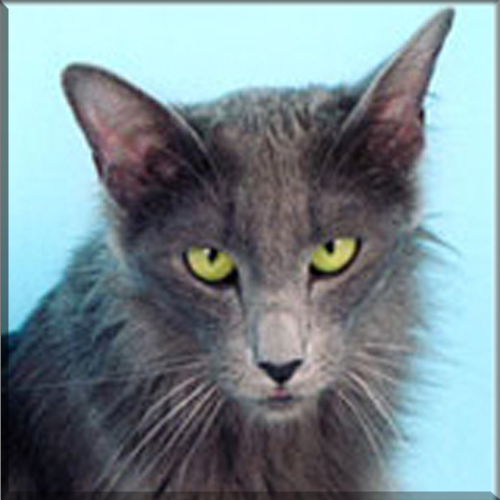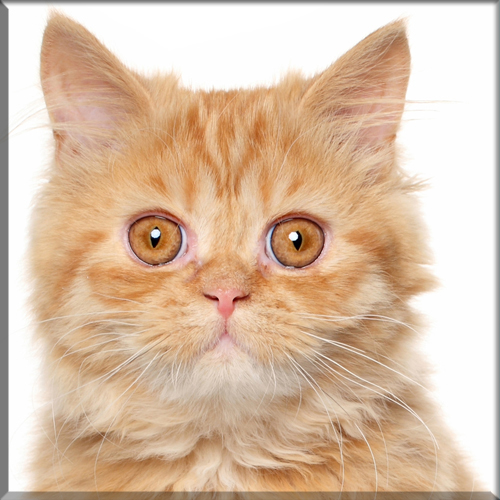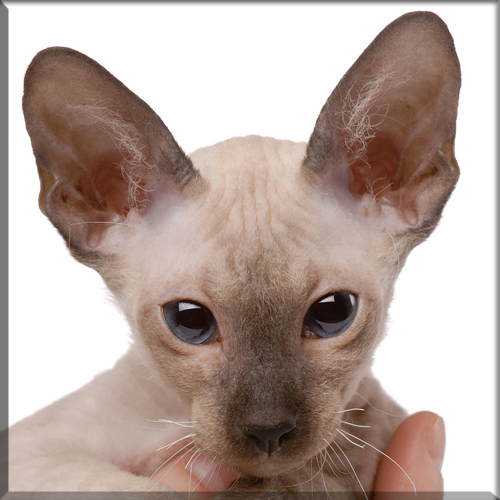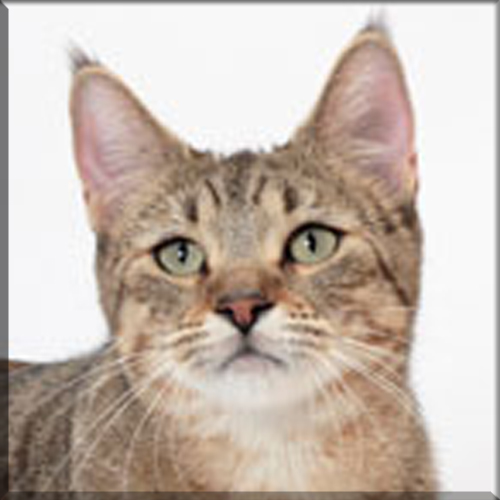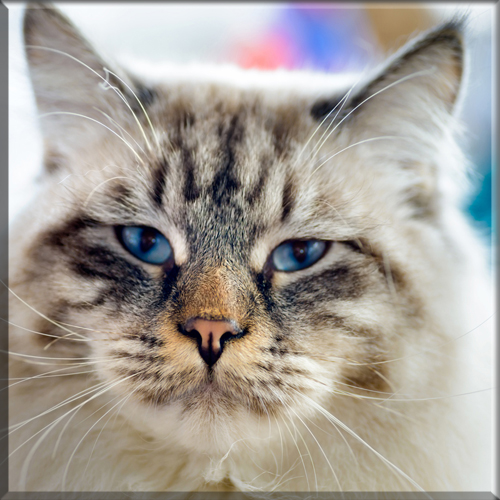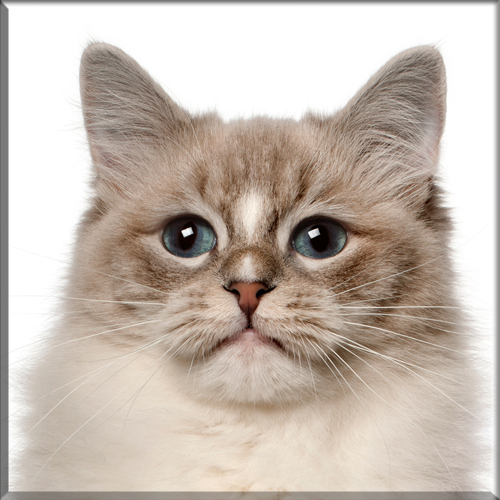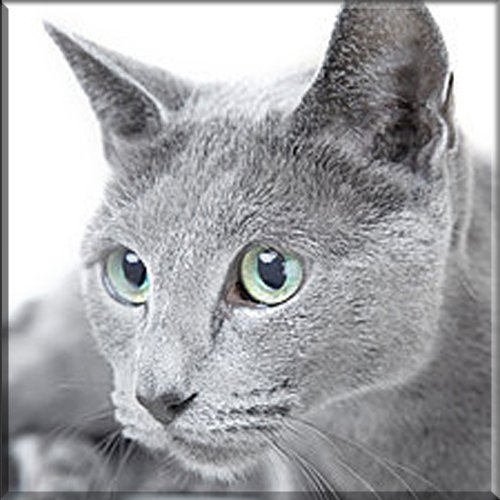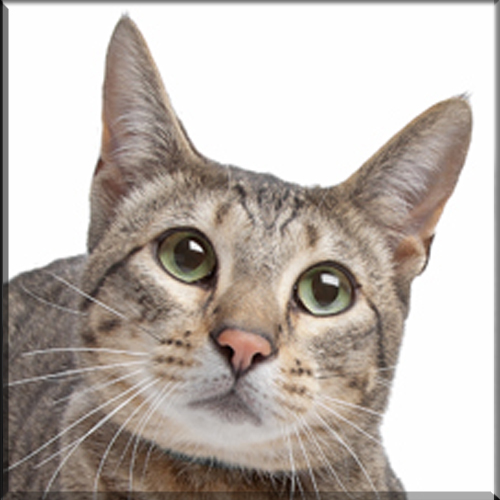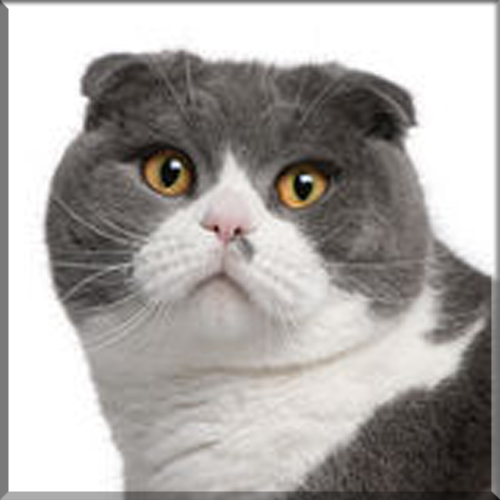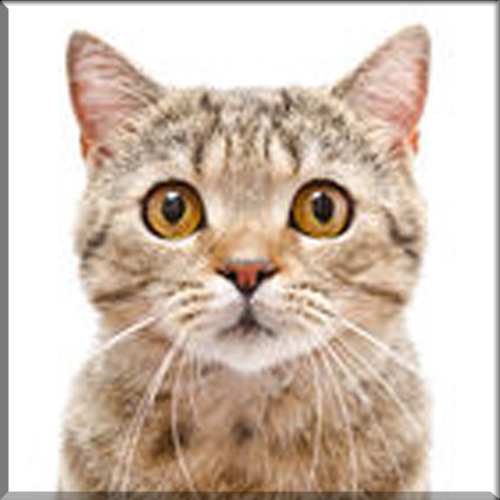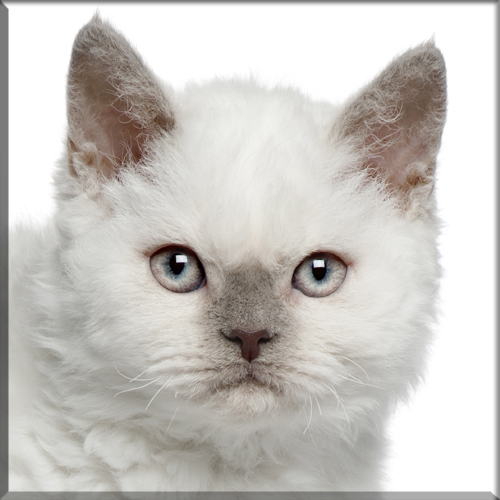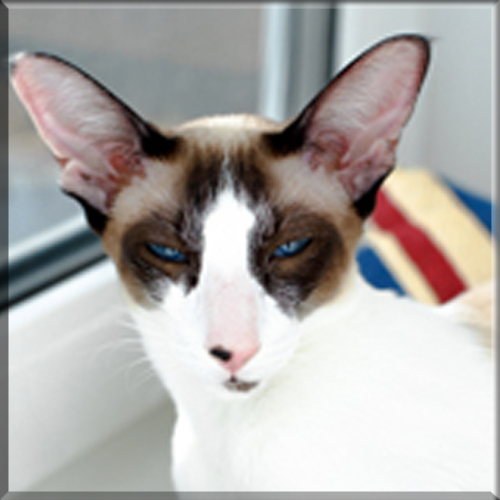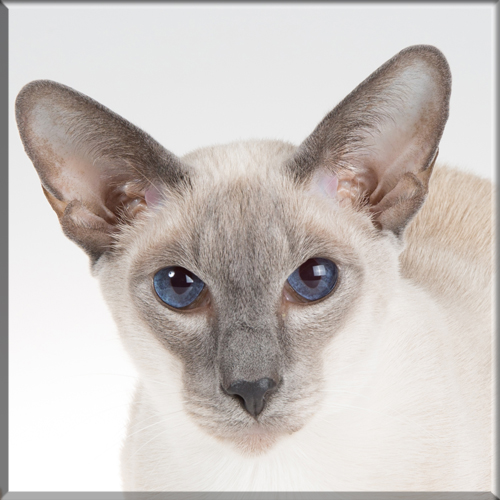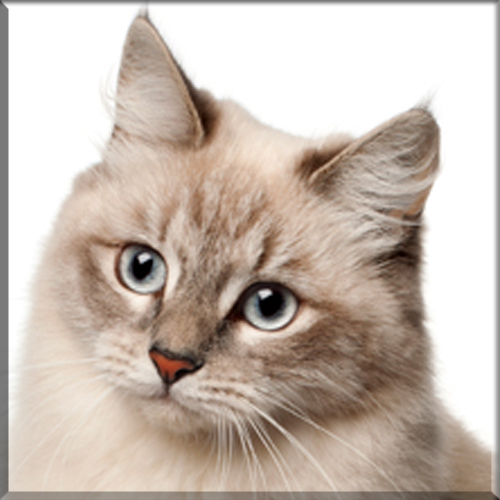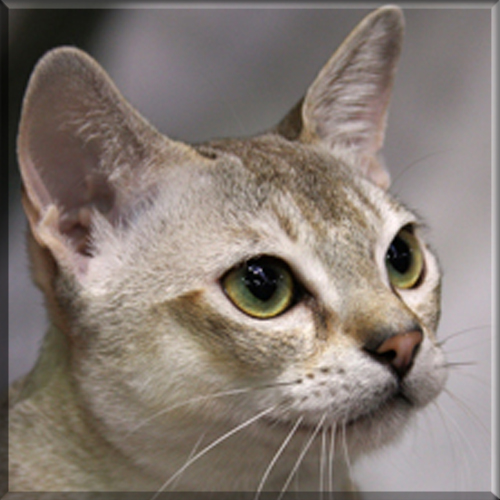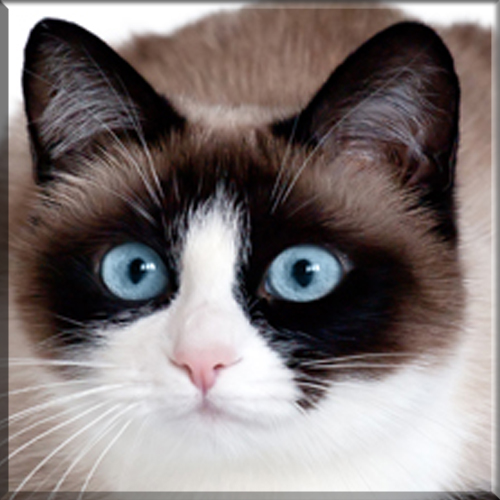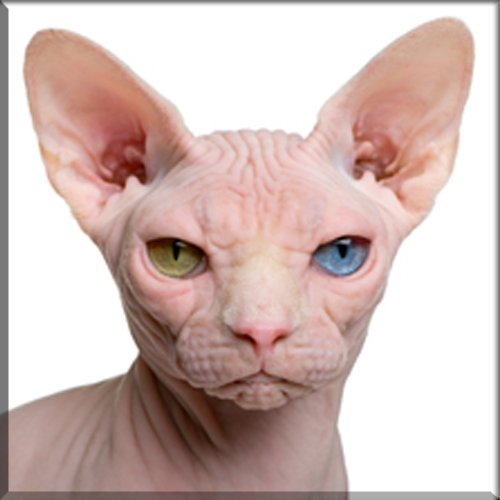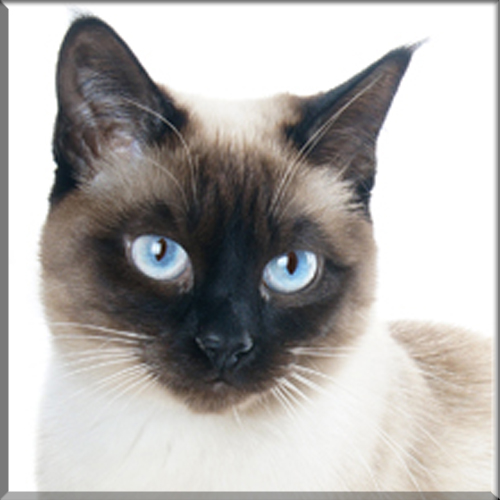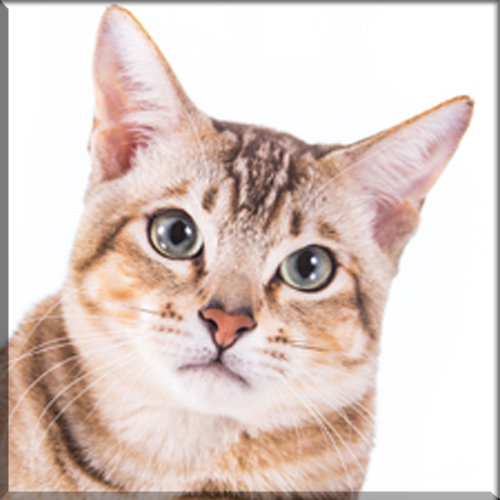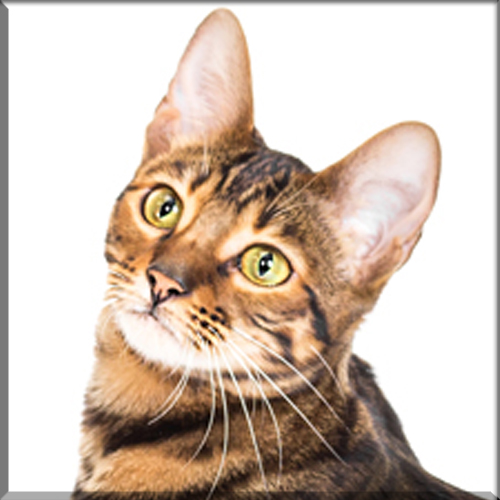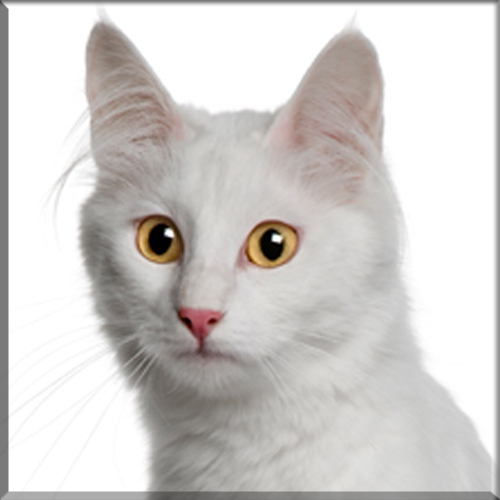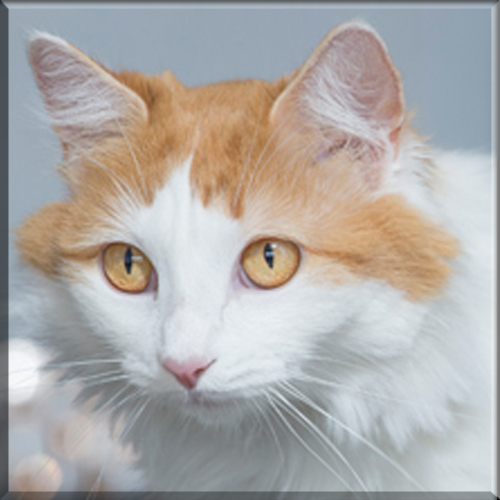Exotic

Appearance and features:
The Exotic Shorthair meets every standard for the Persian breed, except for the coat. Heavily boned, massive cats with lines softened by the thick dense coat. They have broad round heads with low set ears and great big round eyes opening up the short face and giving it a sweet expression. Their round heads are set on robust, short, cobby bodies with little short thick legs balanced by a short thick tail. The plush shorthaired coat is slightly longer than other shorthaired breeds. Dense, fluffy, erect hair.
Size:
This is a medium-size cat weighing 7 – 12 pounds.
Family:
In the late 1950s, the Persian was used as an outcross by some American Shorthair breeders. This was done in secret in order to improve their body type, and crosses were also made with the Russian Blue and the Burmese.
Coloring:
White, Red, Cream, Black, Blue, Chocolate, Lilac, Silver, Golden Cameo, Tortoiseshell, Bluecream, Brown, Lilac Cream, Calico
Tortoiseshell, Bicolor, Tricolor/Calico, Tabby, Smoke, Shaded, Points
Origin:
In the late 1950s, the Persian was used as an outcross by some American Shorthair breeders. This was done in secret in order to improve their body type, and crosses were also made with the Russian Blue and the Burmese. The crossbreed look gained recognition in the show ring, but unhappy American Shorthair breeders successfully produced a new breed standard that would disqualify American Shorthairs that showed signs of crossbreeding. One American Shorthair breeder who saw the potential of the Persian/American Shorthair cross proposed and eventually got the Cat Fanciers’ Association judge and American Shorthair breeder Jane Martinke to recognize them as a new breed in 1966, under the name Exotic Shorthair. In 1987, the Cat Fanciers’ Association closed the Exotic to shorthair outcrosses, leaving Persian as the only allowable outcross breed.
Because of the regular use of Persian as outcrosses, some Exotics may carry a copy of the recessive longhair gene. When two such cats mate, there is a 1 in 4 chance of each offspring being longhaired.
Temperament:
Exotic Shorthairs have a gentle and calm personality reminiscent of the Persian, but are generally livelier than their longhaired ancestors. Curious and playful, they are friendly to other cats and dogs, but they don’t like being left alone and need the presence of their owner. They tend to show more affection and loyalty than most breeds and make excellent lap cats. Their calm, steady nature makes them ideal apartment cats for city dwellers. Nonetheless, Exotics retain some of the energetic spark of the American Shorthair, and they are often capable mouse hunters.
Health concerns:
The Exotic Shorthair is a brachycephalous breed, meaning that its problems result from having the nose and eyes in close proximity to each other, giving the appearance of a pushed-in face. As well as issues with the tear ducts, sinus problems can also occur. Due to the shortened jaw, there is a chance of tooth misalignment or tooth crowding.
- Brachycephalic airway obstructive syndrome. Also referred to as brachycephalic respiratory syndrome or congenital obstructive upper airway disease, this causes upper airway abnormalities ranging in severity. The syndrome can cause increased airway resistance, inflammation of structures in the airways, and increased strain on the heart.Treatment includes weight loss, surgery, and avoiding humid or hot conditions.
- Calcium oxalate urolithiasis. A stone that crystallizes in the bladder and kidney.
- Dystocia. An abnormal labor due to large-domed skulls.
- Feline polycystic kidney disease (PKD). Exotic Shorthairs, as well as Persians and other Persian-derived cats, have a high chance of inheriting PKD, a disease that can lead to kidney failure. Several studies using ultrasound scan screening have shown that the prevalence of PKD in Exotics is between 40–50% in developed nations. DNA screening for PKD is recommended for all Exotic cats used in breeding programs to reduce the incidence of kidney disease by spaying and neutering PKD positive cats.
Breed Characteristics
Here is a helpful guide for the different characteristics of the breed. On a Scale of 1-5. 1 being very low level to 5 being high level.
Hypoallergenic: No

Breeders With Currently Available Kittens
All The Cat Breeds
- Abyssinian
- American Bobtail
- American Curl
- American Shorthair
- American Wirehair
- Balinese
- Bengal
- Birman
- Bombay
- British Shorthair
- Burmese
- Burmillia
- Charteux
- Chausie
- Colorpoint Shorthair
- Cornish Rex
- Devon Rex
- Donskoy
- Egyption Mau
- European Burmese
- Exotic
- Havana Brown
- Highlander
- Himalayan
- Japanese Bobtail
- Khao Manee
- Korat
- LaPerm
- Lykoi
- Maine Coon
- Manx
- Minuet / Napolean
- Munchkin
- Norwegian Forest Cat
- Ocicat
- Oriental Longhair
- Oriental Shorthair
- Persian
- Peterbald
- Pixie Bob
- Ragamuffin
- Ragdoll
- Russian Blue
- Savannah
- Scottish Fold
- Scottish Straight
- Selkirk Rex
- Seychellois
- Siamese
- Siberian
- Singapora
- Snowshoe
- Somali
- Sphynx
- Thai
- Tonkinese
- Toyger
- Turkish Angora
- Turkish Van

